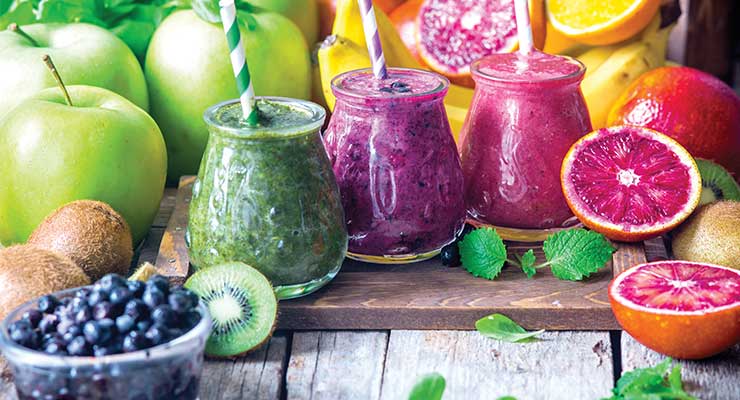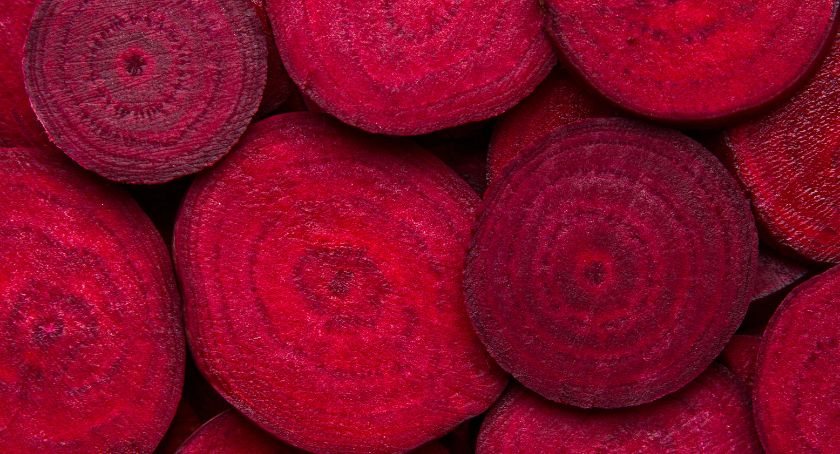Features
Top Flavor Trends Shaping Nutrition Products
Nostalgic flavors, functional flavors, and elevated classics can help brands appeal to all types of consumers.
By: Philip Caputo

The influx of functionally-forward products, adventurous consumer behavior, sharable online experiences, and entrepreneurial contributions to the food and beverage industry has served up a dizzying yet exciting platter of diverse flavor options for functional nutrition products.
Apprehensive about selecting on-trend flavors that deviate from the standards? We don’t blame you; the flavor trend landscape is overwhelming, but Virginia Dare is here to offer guidance as an industry-trusted partner to food and beverage companies.
We recommend a few approaches when considering the flavor trends to innovate around: 1) build on stable, evolving trend themes; 2) consider limited-time offerings (LTOs) to test your consumer’s response or preference; and 3) choose flavor trends that connect with consumers on an emotional level or relatable experience. Three ongoing flavor trends we currently stand by are nostalgic flavors, functional flavors, and elevated classics.
Nostalgic Flavors in Nutritional Products
Based on our observations over the past decade, nostalgic flavors continually prove successful in nutritional products like shakes, dry mixes, bars, bites, cookies, snacks, and similar alternative functional product forms. Nostalgia as a theme in food and beverages is an emotionally connective and constantly changing narrative that evolves with consumers, cultures, and current or past time periods.
Storytelling—a trend in itself—has become essential for brands today; emotionally invested consumers are more likely to connect to a brand with a story, especially one that’s unique, trustworthy, transparent, and relatable. Many nostalgic flavors are connected to emotion by the consumer’s own unique experience. Innovating with nostalgic-inspired, memorable flavors inherently affords a romantic and meaningful brand or product narrative relatable to most.
Childhood nostalgic flavors typically appeal to children and adults alike, such as PB&J, milkshake, birthday cake, brownie batter, and s’mores. However, others are more generation-specific like cereal milk flavors (e.g., fruity cereal, magic marshmallow cereal, puffed peanut butter cereal, cinnamon toast cereal), which resonate more with millennial adults and their childhood memories.
Then we have “what’s old is new,” or retro nostalgic flavors from the past, for new generations of curious consumers: red velvet cake, key lime pie, peach melba, baked Alaska, and moon pies to name a few.
Porting sweet nostalgic dessert flavors into nutrition bars and drinks is category-crossing, another ongoing parallel taste trend that consumers love. Mashups and fusions fit in there too and can be pursued as an offshoot—modern nostalgic hybrids or future nostalgia.
For example, PB&J cups are a mashup of childhood favorites, chocolate peanut butter cup and PB&J. The trendy s’mores flavor is another top choice in protein bars and drinks, tied to childhood nostalgia and camping trips with an interactive multi-texture consumption experience. S’mores is a customizable, category-crossing hybrid mashup dream; think how creative you can be with three customizable layers—the chocolate, marshmallow, and graham cracker.
A “café s’more”protein bar with biscotti graham cracker, espresso crunch chocolate, and latte-flavored marshmallow or a “strawberry shortcake” s’more with cake flavored graham cracker, white chocolate, and strawberry marshmallow. The creative crossing of nostalgia, desserts, and mashups is the epitome of adventure for the thrill-seeking consumer and the evolving narrative.
Why do nostalgic flavors work well and continually show up in new products? One of our theories is that nostalgic sweet flavors are associated with happiness, positive taste memories, pleasure, fun, and childhood bliss. Could the joyful association we have with these flavors positively affect our mood, increase motivation or energy, and return us to a place of comfort? Quite possibly.
Functional Flavors in Nutritional Products
Consumers want ingredients with targeted nutrition attributes that promote healthy lifestyles; a liking for the inherent flavor profiles of those ingredients is a resulting taste trend referenced by many as “functional flavors.” The flavor popularity of turmeric, matcha, elderberry, and ginger are mainstreaming examples.
Current influential ingredient categories include antioxidant-rich super foods/berries, super powders, teas, medicinal mushrooms, and ingredients with healthy fats. Actual product categories driving functional flavors are kombucha and fermented products, protein and greens drinks, herbal teas, tonics, elixirs, and cold-pressed juices.
Functional flavor examples based on their star functional status include dark berry flavors (açaì, bilberry, blackberry, blueberry, and elderberry); nutty/fatty profiles inspired by healthy fats (nut oils, avocado, and chia); mints for digestion and allergies (such as peppermint); sour and early flavors associated with fermented drinks and gut health (fruity kombucha, apple cider vinegar (ACV), sour fruits); and earthy flavors from anti-inflammatory and antioxidant powerhouses (cocoa, ginger, matcha, mushrooms, turmeric).
Many botanical extracts fall into the “functional flavors” category, from florals to herbals to teas contributing both nutrition and taste. Botanicals are emerging across all nutritional drinks and snack supplements such as hydration drinks, functional gummies, and relaxation recovery drinks. Botanicals and functional flavors are winners in the growing clean label hydration and electrolyte beverage category like cocoa-mint and ginger-lemon.
Think mashups, hybrids, and ingredient swaps for creative functional flavor development inspiration; a chia almond butter and elderberry jelly bar, mocha mushroom protein drink, ACV strawberry basil kombucha gummies, and spiced vanilla turmeric avocado oatmilk latte meal replacement.
Elevated Classic Flavors
While consumers are now more experimental and adventurous in their flavor quest, (about 66% of consumers, according to Innova Market Insights), many tend to gravitate toward the flavors they know and love.
Virginia Dare’s answer in nutritional products is the tried-and-true merging of familiar flavors with unique, exotic, or subtle nuances to attract both experimental and conservative consumers—a long-term evolving flavor trend we call “elevated classics.”
Elevating a classic adds a point of differentiation or sophisticated twist to the popular profiles that consumers have been attached to over their lifetime, like vanilla, chocolate, caramel, peanut butter, mocha, coffee, banana, and strawberry. Examples for indulgent protein shakes may include vanilla spiced rum cake batter, vanilla chai horchata, gooey brownie batter, hazel-cocoa butter, peanut butter puffed cereal milk, salted caramel maple, caramel praline turtle, cardamom mocha, chocolate covered espresso bean crunch, strawberry cheesecake milkshake, and caramelized bananas foster brûlée. For adults, concepts like these are mature, playful, and upscale from their roots. Make it familiar, make it different, make it too enticing to say no and you have winner for all.
About the Author: With a decade of flavor and ingredient industry experience, Philip Caputo leads marketing and consumer insight development at Virginia Dare, a distinguished flavor and extract company that helps brands turn ideas into innovative products with tasteful formats and flavors. Caputo has worked in the flavor industry for 10 years, with previous roles at Hagelin Flavors and Frutarom USA. He graduated with a Business Marketing degree from Manhattan College. For more information: www.virginiadare.com.




















